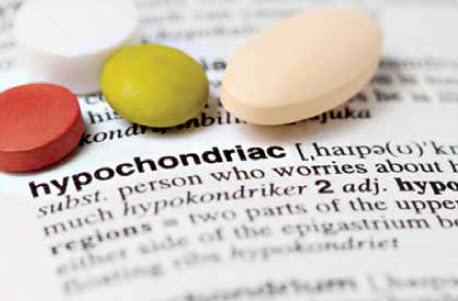Somatic Symptom Disorders – Mental Health Minute
 By: Lisa Philippart
By: Lisa Philippart
Thank you readers for your kind words of support and encouragement regarding my articles. I wanted to be sure to remind you that my articles on various mental disorders and illnesses are for informational purposes. Please do not try to “diagnose” yourself as this can lead to all sorts of stress that you really don’t need! Just as you may look to WebMD for inquiries and research on physical ailments, my hope is to provide you with an opportunity to better understand what may be going on mentally and emotionally for you or for someone you love.

I find somatoform disorders to be difficult to understand, diagnose, and treat. In fact, I have only committed to this diagnosis once in my 13-year career as a Licensed Professional Counselor. The challenge with somatoform disorders is that they are often co-occurring with mental health conditions, such as anxiety and depression. This means that either the somatoform disorder needs to be treated simultaneously with the mental illness or the mental illness is the underlying cause of the somatoform disorder. Somatoform disorders can also co-occur with substance abuse, as individuals attempt to cope with a lack of explanation for their symptoms.
What are somatoform disorders? Somatoform disorders are a set of psychological conditions where a person experiences bodily symptoms that can’t be accounted for by a medical or neurological diagnosis. The symptoms can range from mild to severe and infrequent to chronic, and are out of the person’s conscious control. These types of disorders are characterized by excessive focus on physical ailments, such as pain and fatigue. Oftentimes a person with somatoform disorder will constantly obsess over their symptoms while attempting to discover an explanation for them.

Types of somatoform disorders: The various somatoform disorders are differentiated by thoughts, emotions, and actions related to the somatic symptoms. The main types of somatoform disorders are somatization disorder, conversion disorder, pain disorder, and hypochondriasis. Somatization disorders occur when someone continually complains of physical symptoms when there is no physical condition present to cause the symptoms. Conversion disorders occur when physical symptoms imitate symptoms of a neurological issue even though there is no neurological disorder present. These symptoms may include paralysis, vision or hearing loss, or seizures. Pain disorders are characterized by recurring pain in one or more parts of the body with no known cause. This diagnosis is given when the pain causes considerable distress, with psychological factors playing a significant role in the onset, magnitude, and duration of the pain. Hypochondriasis occurs when someone believes that normal bodily signs or minor symptoms are evidence of a severe illness, even when medical tests prove otherwise. Physical symptoms may be either real or imagined. Hypochondriasis was removed from the DSM-5 (Diagnostic Statistical Manual of Mental Disorders) and replaced/renamed as illness anxiety disorder.

Symptoms and causes of somatoform disorders. Pain is the most frequent symptom experienced in somatoform disorders, and is usually accompanied by beliefs, feelings, and behaviors related to this pain. These thoughts, emotions, and behaviors may include the following: persistent worry about possible sickness, interpretation of “normal” bodily sensations as an indicator of severe sickness, fear that symptoms are life-threatening in the absence of medical confirmation, mistrust of medical treatments, excessive visits to a doctor or hospital that don’t alleviate concerns, and excessive impairment compared with the commonly expected medical circumstance. While it is not exactly clear what causes somatoform disorders, it is believed that there are several contributing factors. Genetic features, such as hypersensitivity to pain, may be involved. The effect of family dynamics may be another influence. Increased attention to bodily symptoms when someone has difficulty identifying, discussing, or processing emotions is often involved. And finally, a somatoform disorder may develop in a subconscious effort to attract attention because of the perceived illness.
Somatoform disorder treatment. Treatment for somatoform disorder is geared toward enhancing someone’s daily functioning by reducing physical symptoms or improving the ability to cope with them. Psychotherapy is usually an effective treatment because physical symptoms are often related to underlying psychological conditions. CBT or cognitive behavior therapy is commonly used because of its focus on helping people change their thoughts and behaviors as related to the condition or symptoms. The goal is to help you to decrease preoccupation with your illnesses and learn how to cope with the physical symptoms and other emotional and mental difficulties.
By: Lisa Philippart
Licensed Professional Counselor